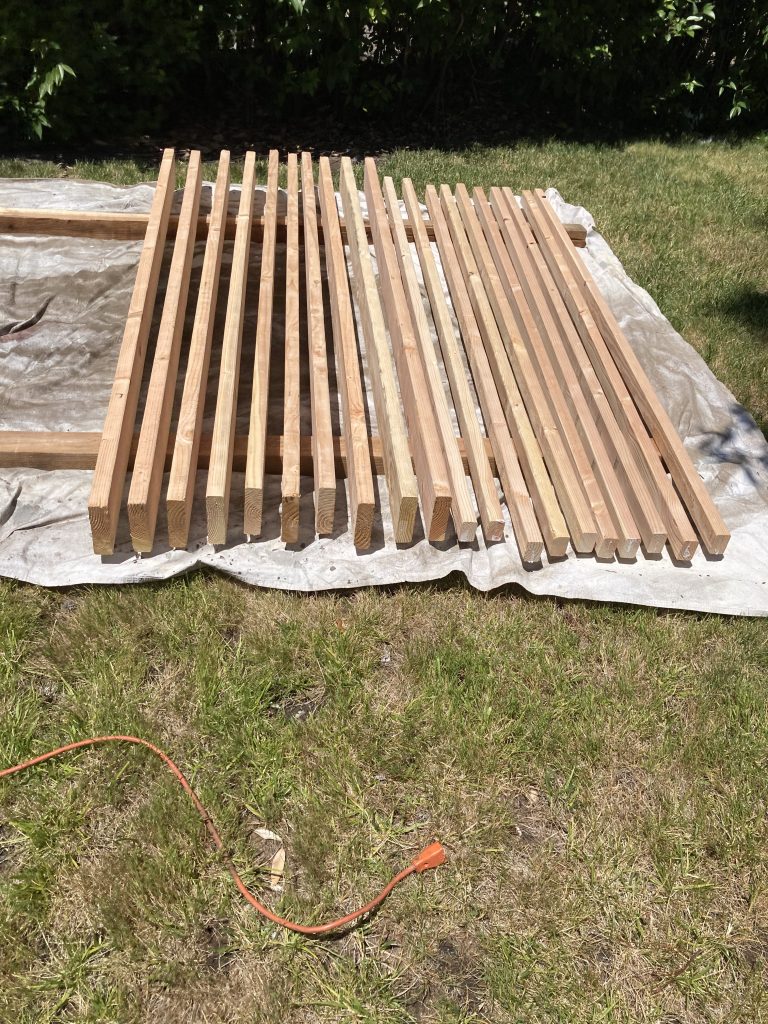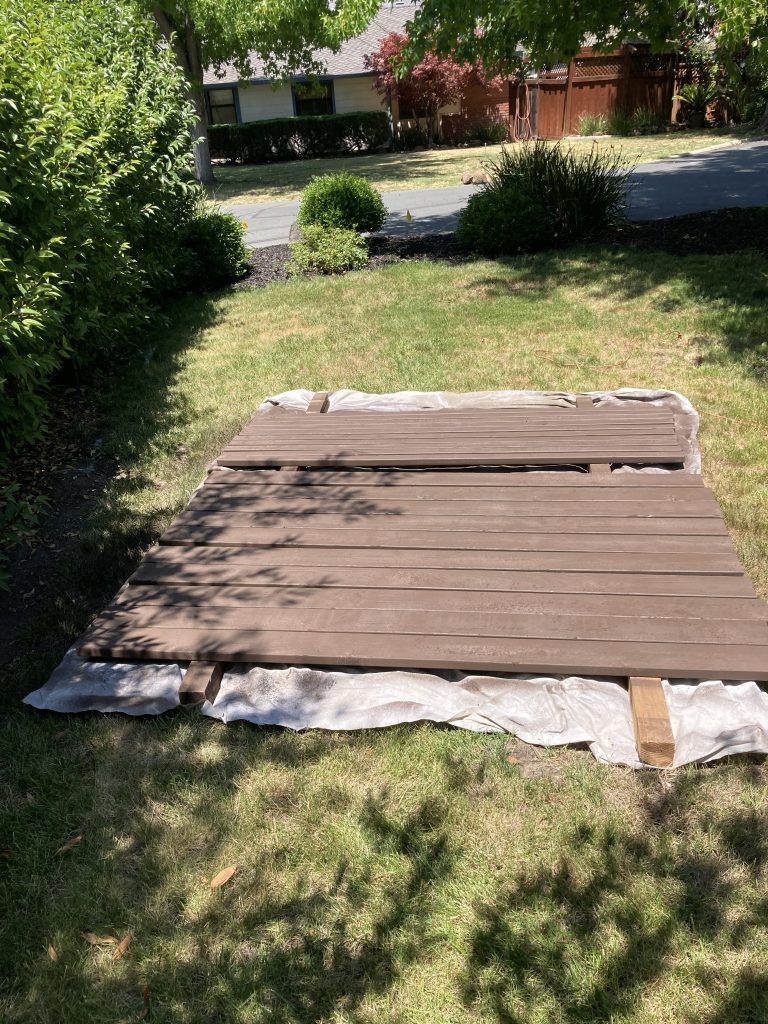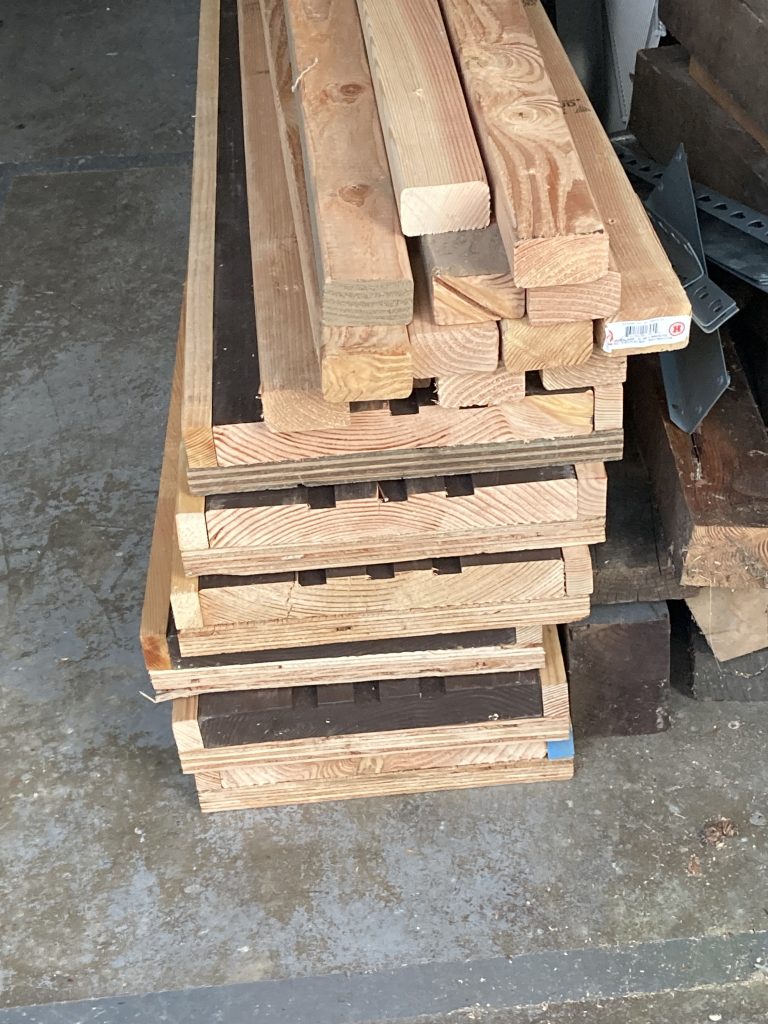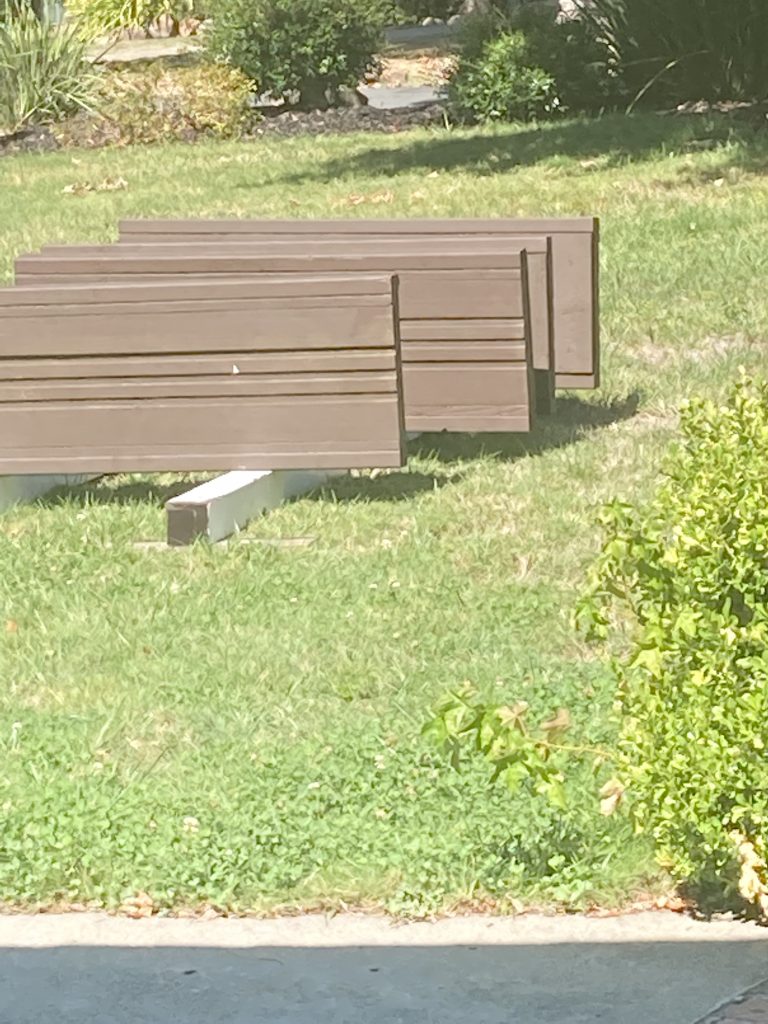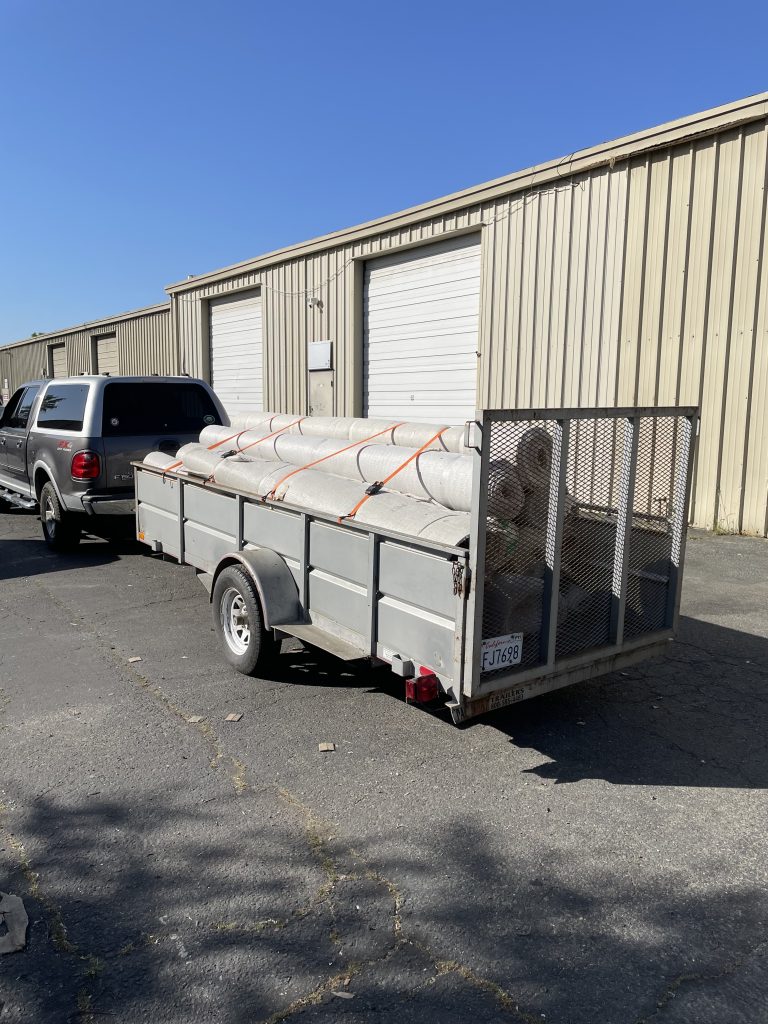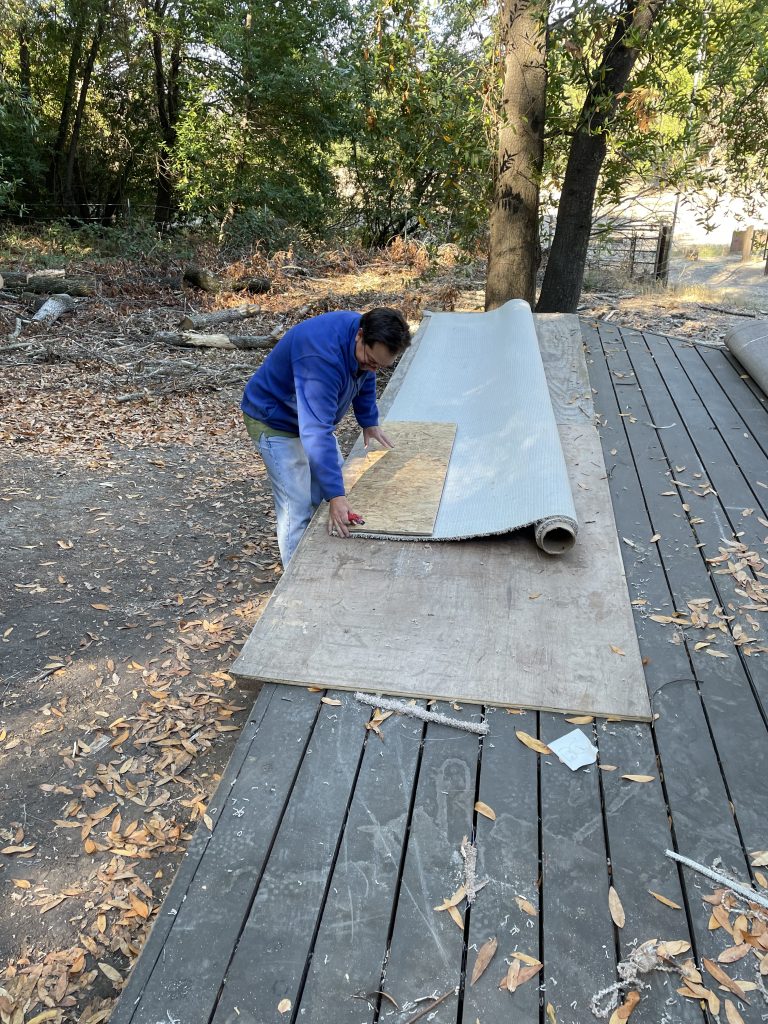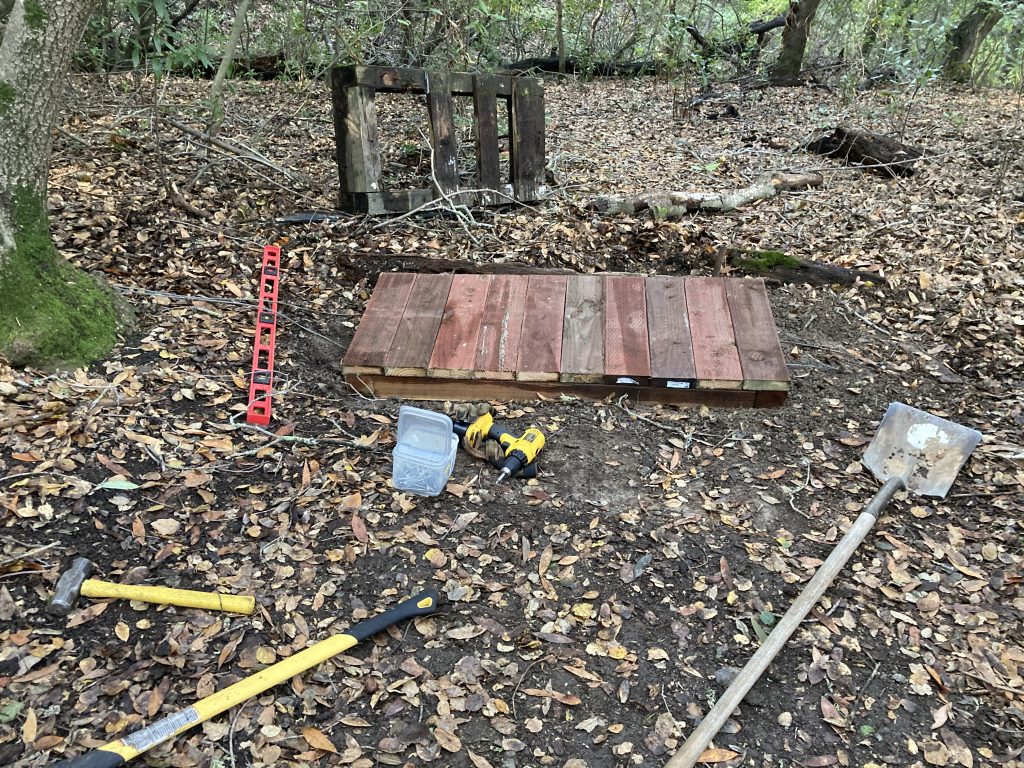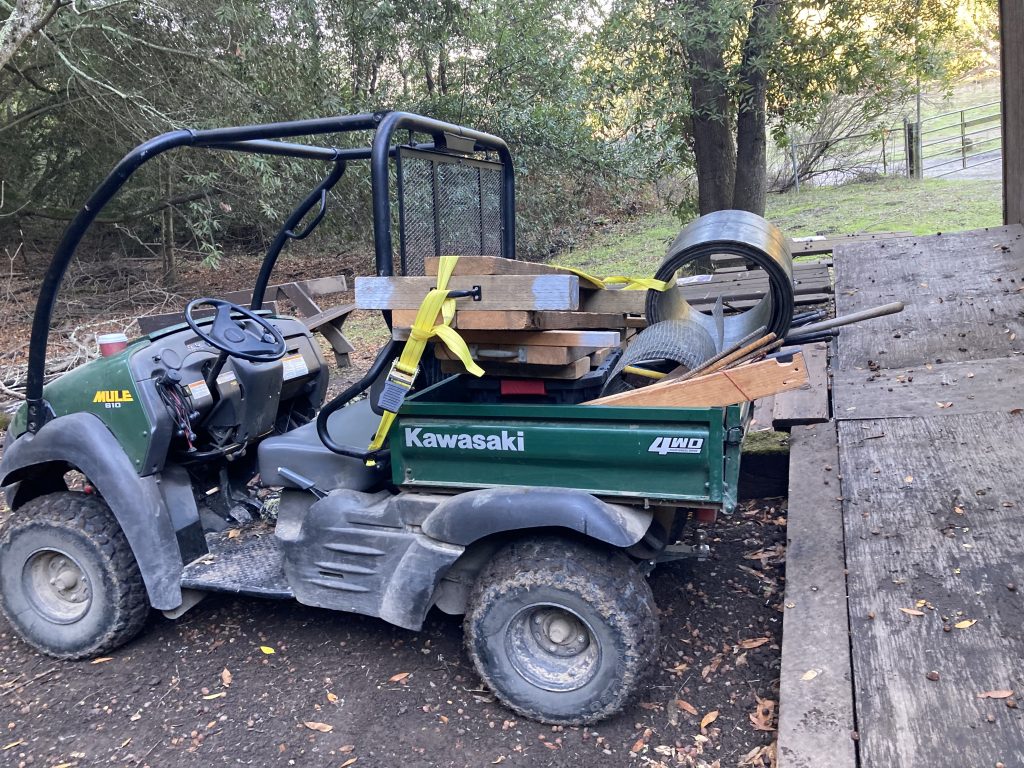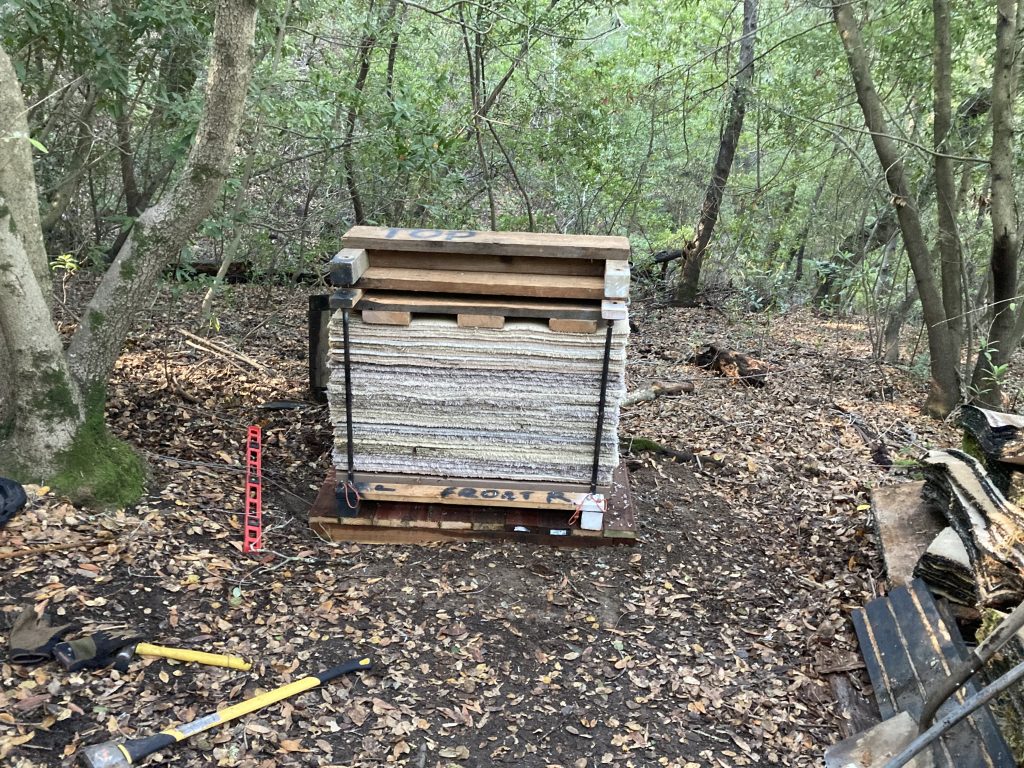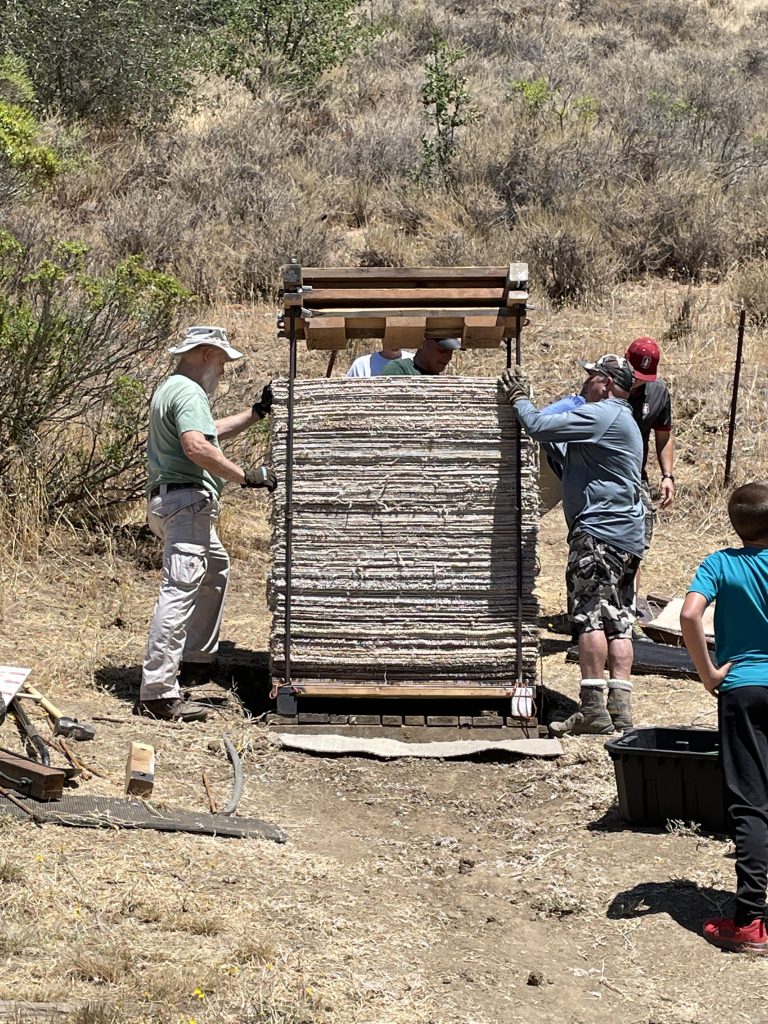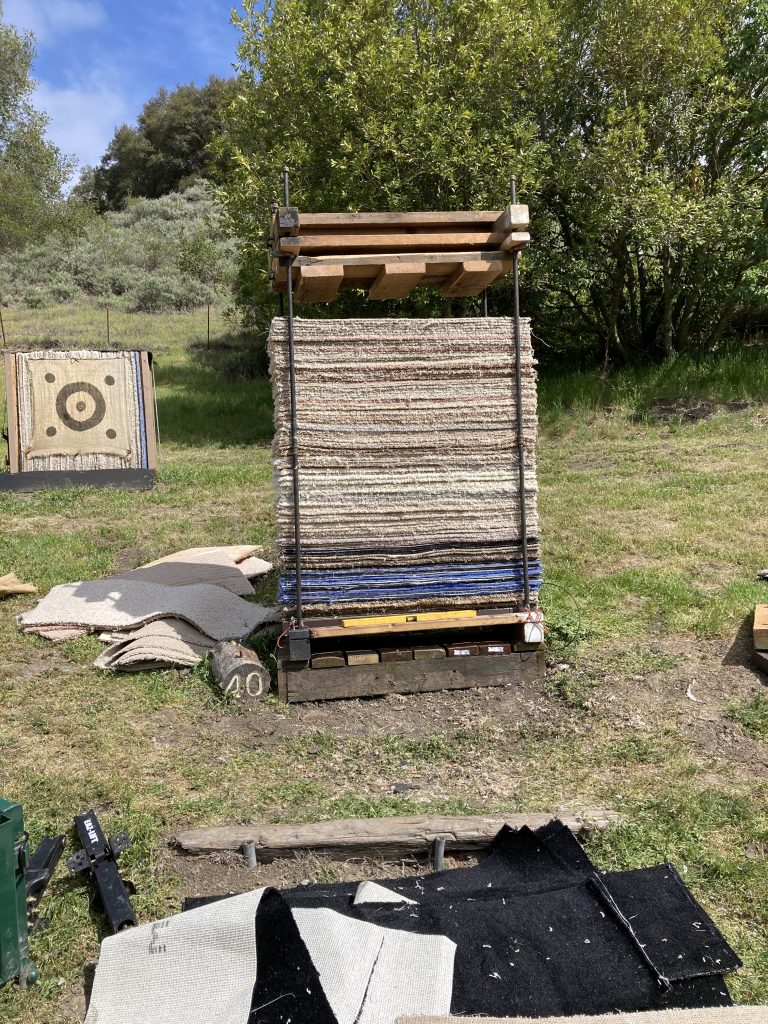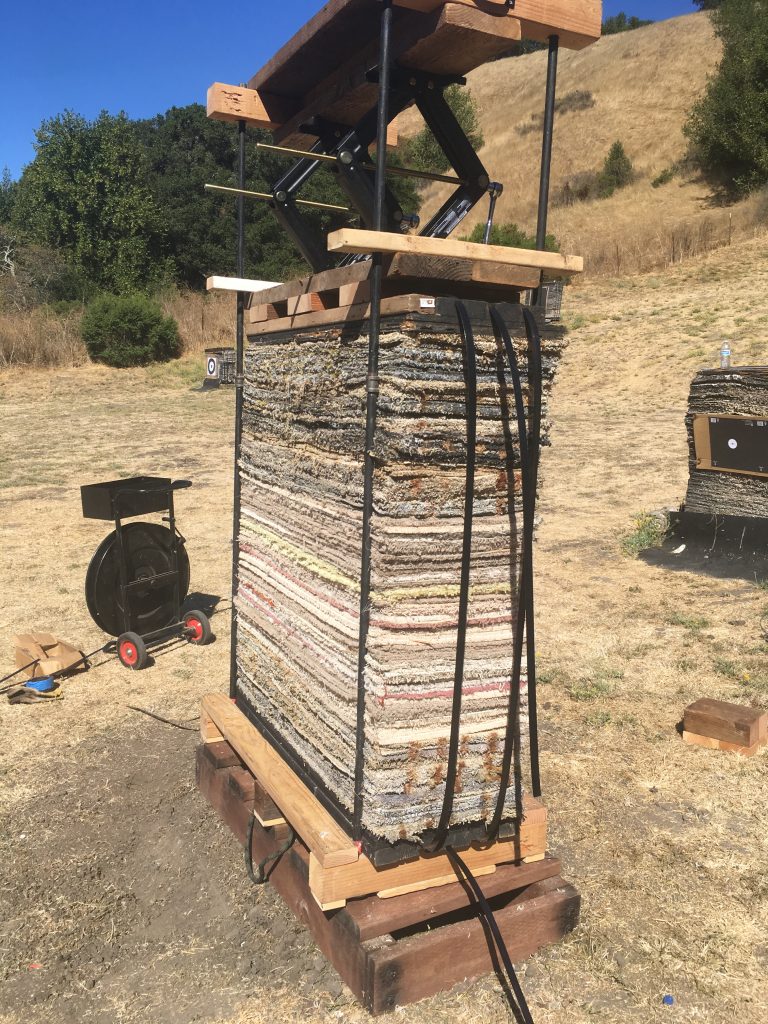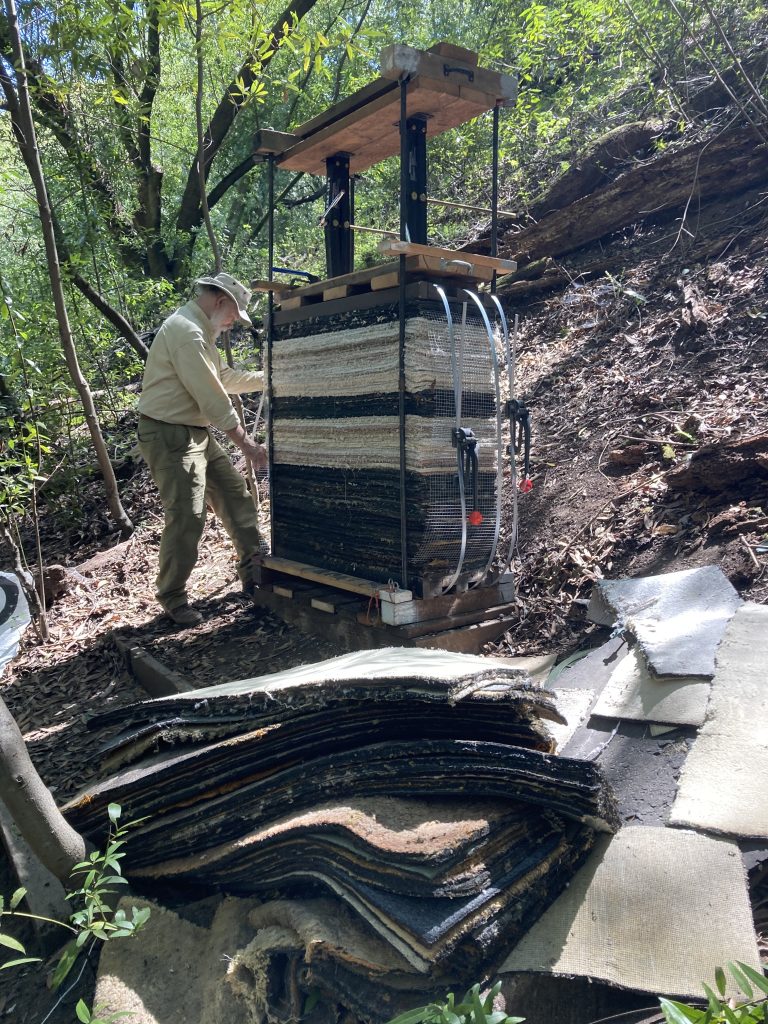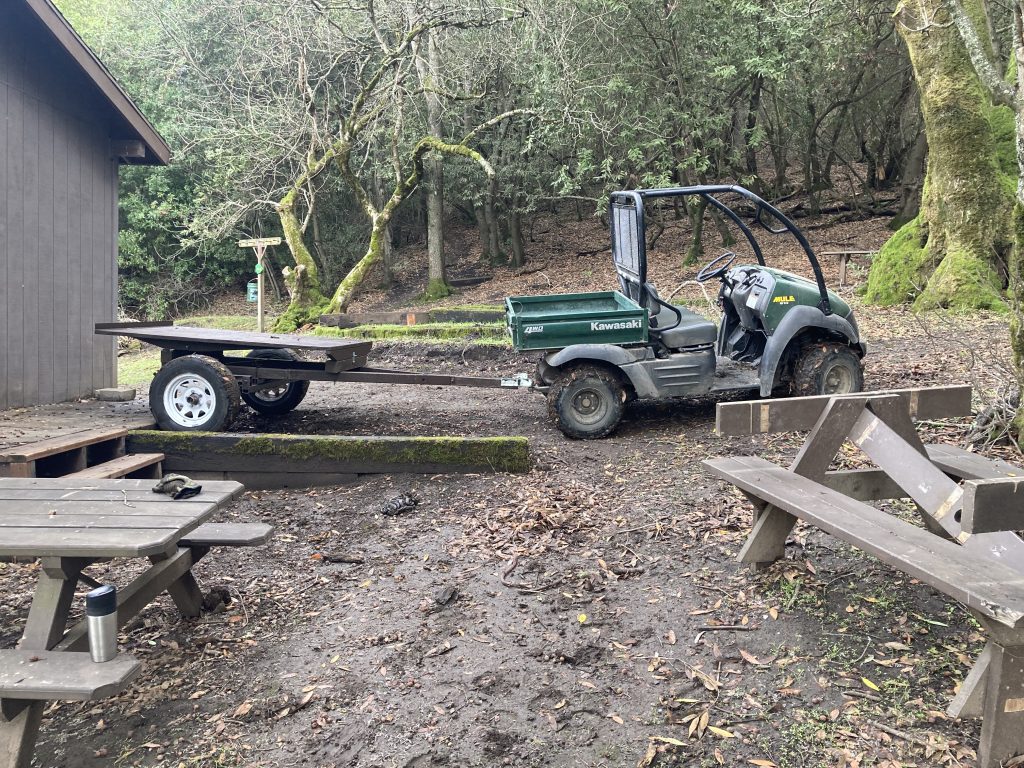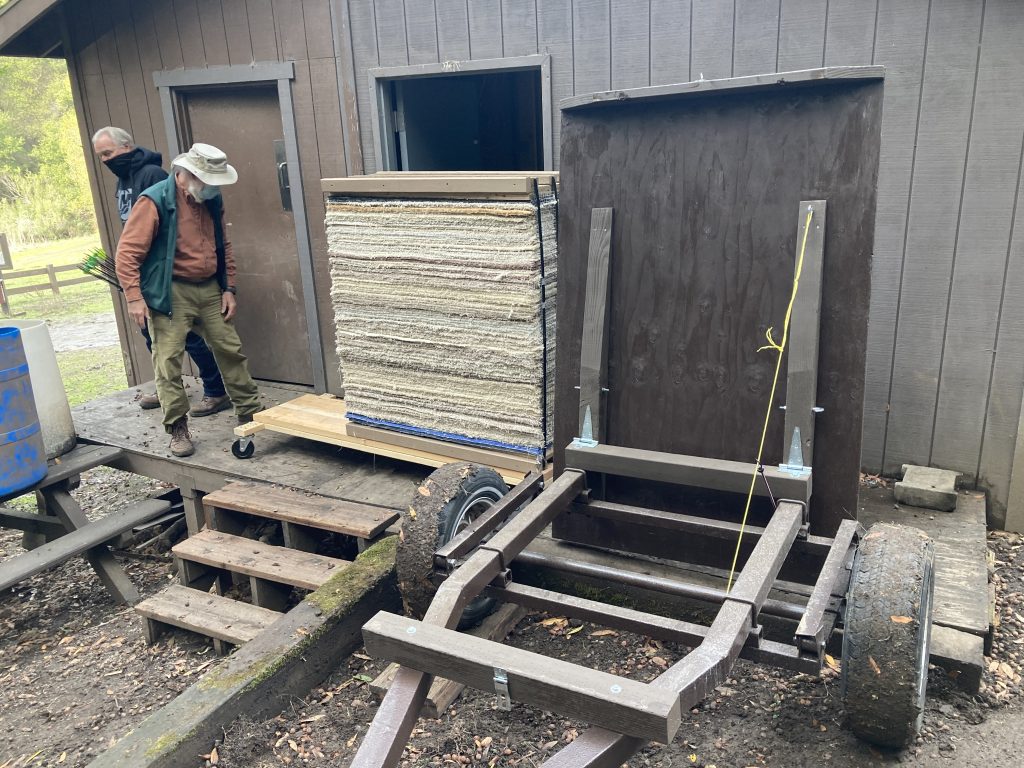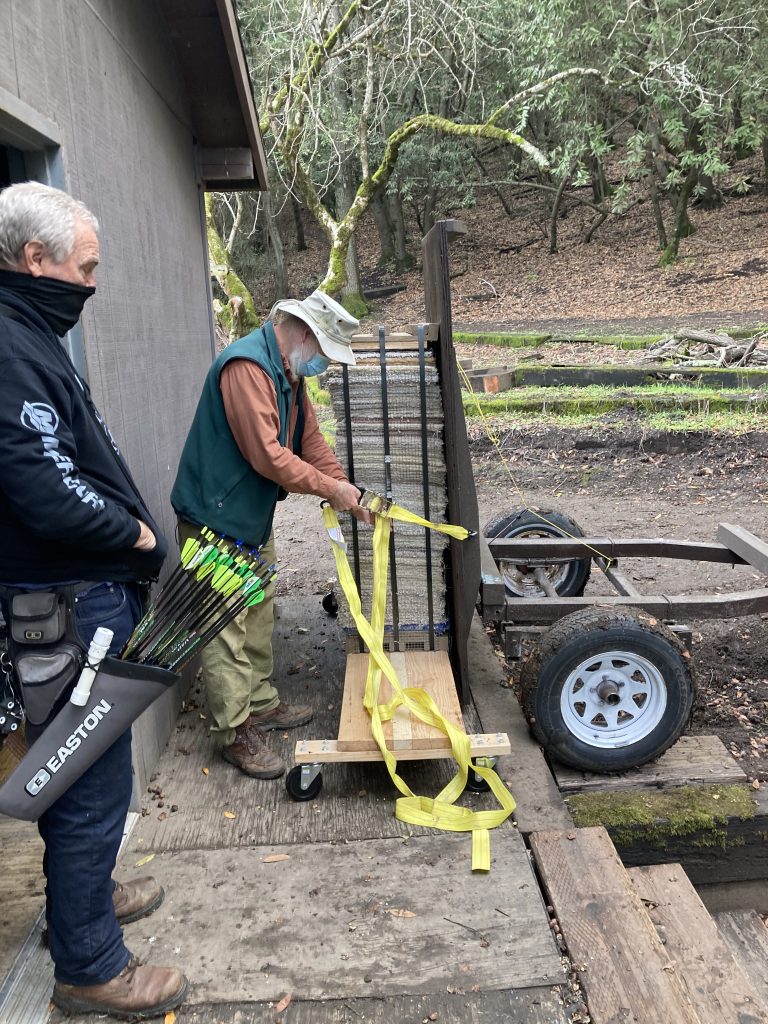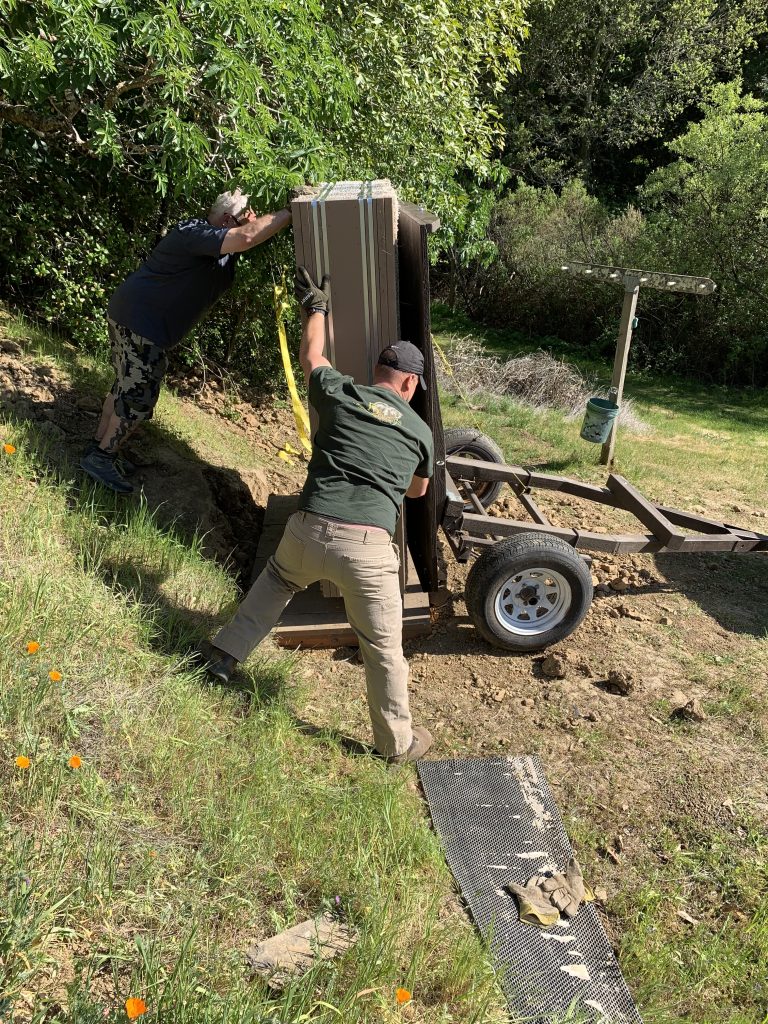The carpet archery bales used on the range are constructed on site by club members . From the point where a bale has failed or been determined to be at the end of its useful life, the club will swing into action to replace.
Before a bale can be built, there is plenty of prep work that is completed. Lumber is cut, painted and assembled into bale caps. These caps keep the carpet bales uniform in shape. Bulit from 1″ thick plywood and 2″ x 12″ lumber, the caps resist flexing. A 2″ x 3″ sacrificial board is added that be replaced if damaged by arrow strikes. A conveyor belt strip is added for additional protection.
The club has worked to develop contacts for carpet donations of remnant rolls. These are stored at the range where members cut into 17″ x 47″ pieces that are eventually stacked into new bales.
On much of the range, bales are built at the target location with a portable pipe bale press. The press base supports the lower bale cap. The first level of vertical pipe forms a frame around the bale as the carpet is stacked. The middle and upper press levels stacked on the carpet and a pipe extension is added through the frames. The frames are lifted to the top and supported as more carpet is stacked to the desired height before compressing.
A top cap is set on the carpet and the middle press frame is lowered onto the cap. Two 24″ scissor jacks are placed between the two upper frame levels and extended, bracing against the top frame and compressing the carpet downward.
Once proper compression is reached the bale is squared up and metal banding is added around the bale. The jacks are retracted, and the bale press disassembled. The bale is rotated 90 degrees and secured to the base with cabling. Vertical carpet allows the arrows to better slide between layers of carpet rather than puncturing through them, extending bale life.
For areas on the practice range and the roving range that flat or slightly sloped, a stationary press is used to construct bales. Bales are then loaded onto a specialized trailer and driven to site and placed onto the base.


